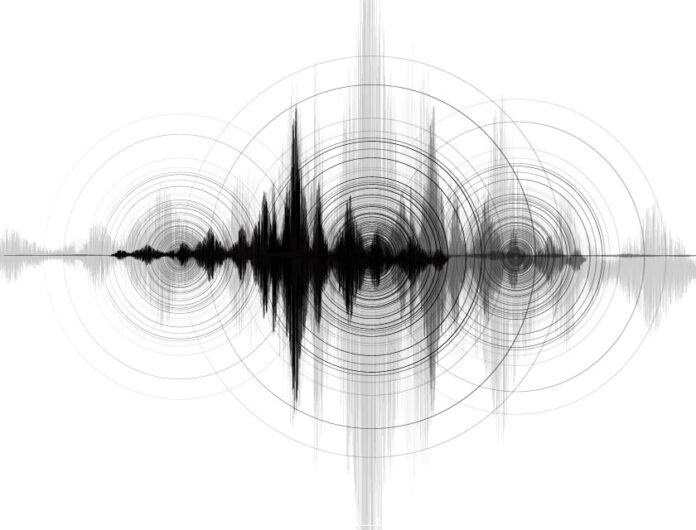یک رویکرد جدید هوش مصنوعی می تواند به پیش بینی مکان پس لرزه های پس از زلزله کمک کند
An زلزله is a phenomenon caused when rock underground in the زمین crust suddenly breaks around a geological fault line. This causes rapid release of energy which produces seismic waves which then make the ground shake and this is the sensation we fell during an earthquake. The spot where the rock breaks is called focus of the زلزله and place above it on ground is called ‘epicentre’. The energy released is measured as magnitude, a scale to describe how energetic was an earthquake. An earthquake of magnitude 2 is barely perceptible and can be recorded only by using sensitive specialized equipment, while زلزله of more than magnitude 8 can cause the ground to noticeably shake very hard. An earthquake is generally followed by many aftershocks occurring by a similar mechanism and which are equally devasting and many times their intensity and severity is similar to the original earthquake. Such post-quake tremors occur generally within the first hour or a day after the main زلزله. Forecasting spatial distribution of aftershocks is very challenging.
Scientists have formulated empirical laws to describe size and time of aftershocks but pinpointing their location is still a challenge. Researchers at Google and Harvard University have devised a new approach for assessing زلزله and forecasting location of aftershocks using artificial intelligence technology in their study published in طبیعت. آنها به طور خاص از یادگیری ماشینی استفاده کردند - جنبه ای از هوش مصنوعی. در رویکرد یادگیری ماشینی، یک ماشین از مجموعه ای از داده ها "یاد می گیرد" و پس از کسب این دانش می تواند از این اطلاعات برای پیش بینی داده های جدیدتر استفاده کند.
محققان ابتدا پایگاه داده ای از زمین لرزه های جهانی را با استفاده از الگوریتم های یادگیری عمیق تجزیه و تحلیل کردند. یادگیری عمیق یک نوع پیشرفته از یادگیری ماشینی است که در آن شبکه های عصبی سعی می کنند فرآیند تفکر مغز انسان را تقلید کنند. بعد، هدفشان این بود که بتوانند پیش بینی aftershocks better than random guessing and try to solve the problem of ‘where’ the aftershocks will occur. Observations collected from more than 199 major earthquakes around the world were utilized consisting of around 131,000 mainshock-aftershock pairs. This information was combined with a physics-based model which describing how زمین would be strained and tense after an زلزله which will then trigger aftershocks. They created 5 kilometer-square grids within which system would check for an aftershock. The neural network would then form relationships between strains caused by main earthquake and the location of aftershocks. Once neural network system was well-trained in this manner, it was able to predict location of aftershocks accurately. The study was extremely challenging as it used complex real-world data of earthquakes. Researchers alternatively set up مصنوعی و نوعی زلزله های "ایده آل" برای ایجاد پیش بینی و سپس بررسی پیش بینی ها. با نگاهی به خروجی شبکه عصبی، آنها سعی کردند تا تحلیل کنند که چه مقدار متفاوتی احتمالاً پیشبینی پس لرزهها را کنترل میکند. پس از انجام مقایسه های فضایی، محققان به این نتیجه رسیدند که یک الگوی پس لرزه معمولی از نظر فیزیکی "قابل تفسیر" است. این تیم پیشنهاد می کند که کمیتی به نام دومین نوع تنش تنش انحرافی - که به سادگی J2 نامیده می شود - کلید را نگه می دارد. این مقدار بسیار قابل تفسیر است و به طور معمول در متالورژی و سایر زمینه ها استفاده می شود اما قبلاً هرگز برای مطالعه زلزله استفاده نشده است.
Aftershocks of earthquakes cause further injuries, damage properties and also hinder rescue efforts therefore predicting them would be life-saving for humanity. Real time forecast may not be possible at this very moment as the current AI models can deal with a particular type of aftershock and simple geological fault line only. This is important because geological fault lines have different geometry in diverse geographical location on the سیاره. So, it may not be currently applicable to different type of earthquakes around the world. Nevertheless, artificial intelligence technology looks suitable for earthquakes because of n number of variables which need to considered when studying them, example strength of the shock, position of tectonic plates etc.
شبکههای عصبی به گونهای طراحی شدهاند که در طول زمان بهبود پیدا کنند، یعنی با وارد شدن دادههای بیشتر به یک سیستم، یادگیری بیشتری صورت میگیرد و سیستم به طور پیوسته بهبود مییابد. در آینده چنین سیستمی می تواند بخشی جدایی ناپذیر از سیستم های پیش بینی مورد استفاده توسط زلزله شناسان باشد. برنامه ریزان همچنین می توانند اقدامات اضطراری را بر اساس آگاهی از رفتار زلزله اجرا کنند. این تیم می خواهد از فناوری هوش مصنوعی برای پیش بینی بزرگی زمین لرزه ها استفاده کند.
***
{شما میتوانید مقاله پژوهشی اصلی را با کلیک بر روی پیوند DOI که در فهرست منابع ذکر شده در زیر آمده است بخوانید}
منبع (ها)
DeVries PMR و همکاران. 2018. یادگیری عمیق الگوهای پس لرزه پس از زلزله های بزرگ. طبیعت560 (7720).
https://doi.org/10.1038/s41586-018-0438-y
***






































